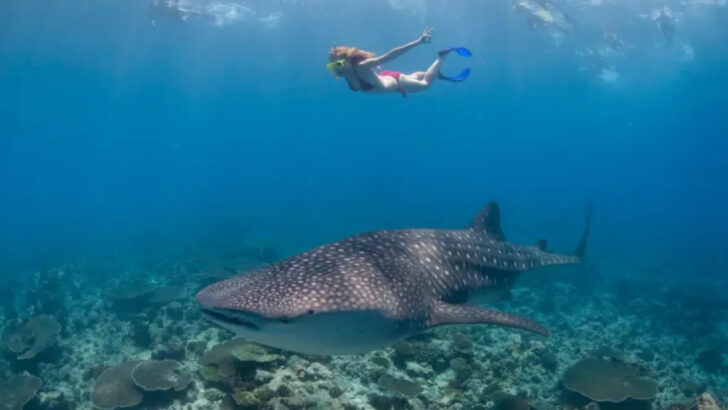Some sharks don’t care how experienced you are—they’ll size you up the moment you hit the water.
The ocean doesn’t come with warning signs, and when you’re diving into the deep blue to get face-to-face with these ancient predators, things can get… sharp.
From stealthy hunters with a reputation to match, to misunderstood giants that just want to cruise by unnoticed, shark encounters can either fuel your adrenaline or leave you sprinting back to the boat.
But not all dive spots are a gamble.
Some places are surprisingly safe—almost serene—despite hosting the very species that haunt beachgoers’ dreams.
This isn’t about avoiding sharks altogether.
It’s about knowing which species are more bite-prone—and where you can still enjoy the thrill of the dive without becoming part of the food chain.
Let’s separate the danger zones from the dream dives.
And meet the sharks that don’t always play nice.
Great White Shark
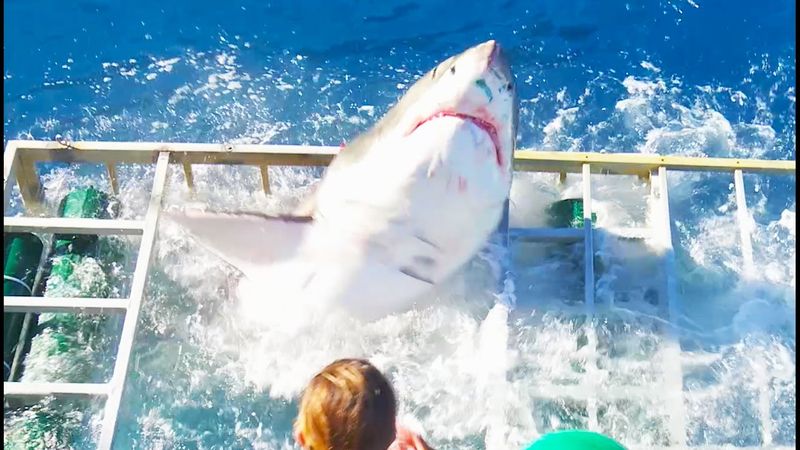
Known for its massive size and iconic presence, the Great White Shark is often depicted in popular media. These apex predators, reaching lengths up to 20 feet, are responsible for a significant number of unprovoked attacks on divers worldwide. Imagine encountering one beneath the waves; their curious nature might lead them to investigate humans.
Despite their fearsome reputation, Great Whites are not mindless killers. Many attacks are exploratory, as they use their powerful jaws to understand unfamiliar objects. Captivating yet formidable, they are a testament to nature’s raw power.
Bull Shark
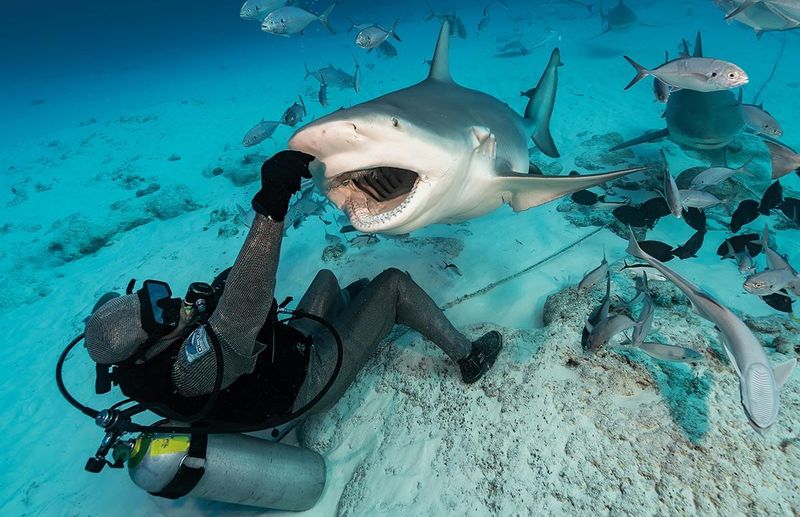
With a stout body and aggressive demeanor, the Bull Shark is a force to be reckoned with. Unlike other species, it can thrive in both salt and fresh water, making it more likely to encounter humans. Often found in warm, shallow waters, they have been known to swim upriver, even inhabiting freshwater lakes.
Their unpredictable behavior, combined with a tendency to strike without warning, earns them a spot among the most dangerous sharks. Yet, their adaptability and resilience also fascinate researchers, who study them to understand more about shark evolution.
Tiger Shark
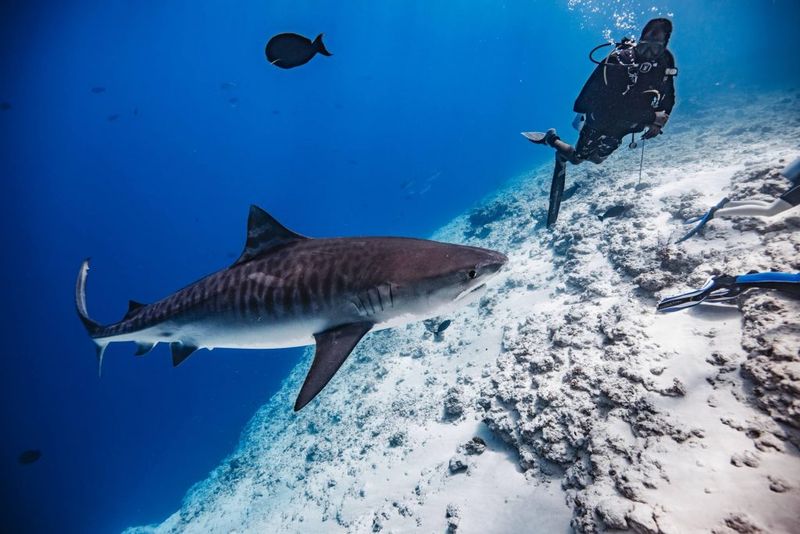
With notable stripes akin to a tiger, the Tiger Shark is easily recognizable. These solitary hunters have a reputation for being indiscriminate eaters, often consuming a range of prey from fish to license plates. Their curiosity leads them to investigate divers, sometimes resulting in attacks.
These encounters often stem from their innate inquisitiveness rather than aggression. Found in tropical and subtropical waters, Tiger Sharks are integral to maintaining the balance of marine ecosystems. Their role as apex predators ensures the health and diversity of oceanic life.
Oceanic Whitetip Shark
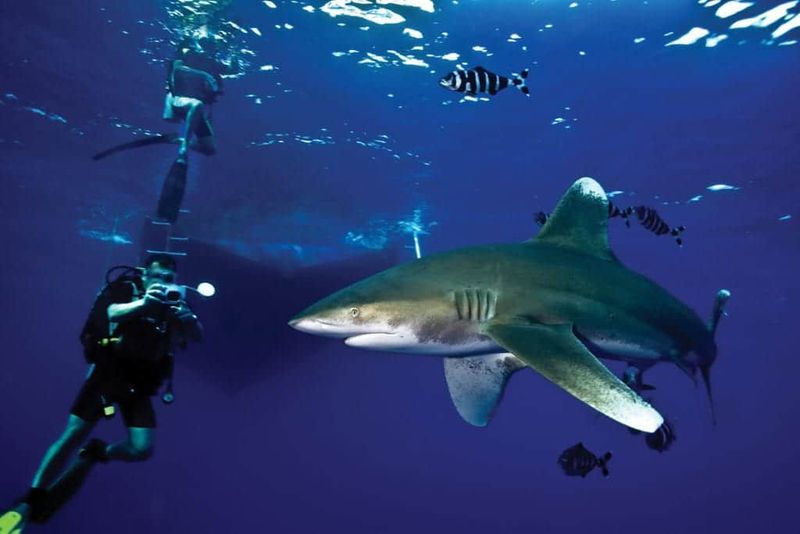
Once considered the most dangerous of all sharks, the Oceanic Whitetip’s bold temperament makes it a prime suspect in attacks on shipwreck or plane crash survivors. These sharks roam the open ocean, often far from land, and are known for their persistence.
Their distinct white-tipped fins are easily identifiable against the deep blue sea. Although their numbers have drastically declined due to overfishing, they remain a potent symbol of the untamed ocean. Understanding their behavior helps mitigate risks, allowing divers to coexist safely with these remarkable creatures.
Hammerhead Shark
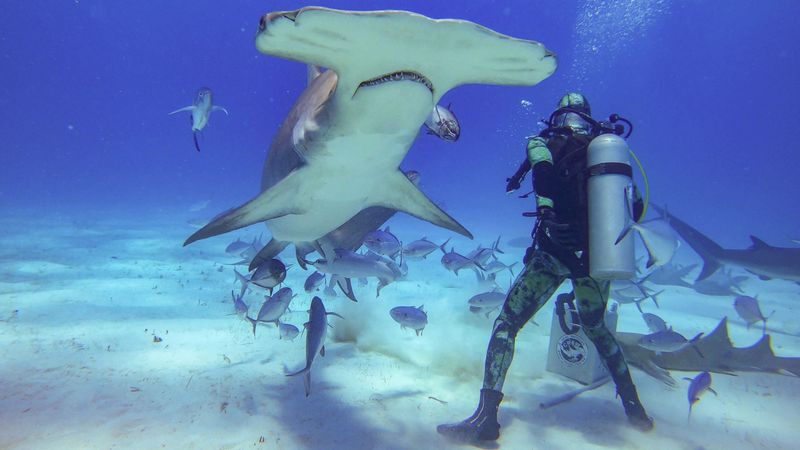
With their unmistakable head shape, Hammerhead Sharks are an enigmatic presence in the ocean. Though rarely aggressive towards humans, their curious nature can lead to close encounters. Their eyes, located on the sides of their distinctive heads, grant them a wide field of vision, aiding in navigation and hunting.
Hammerheads are often found in warm waters, especially near coastlines and continental shelves. These social creatures sometimes swim in schools during the day. While not generally considered dangerous, respect and caution are always advised when encountering these fascinating sharks.
Shortfin Mako Shark
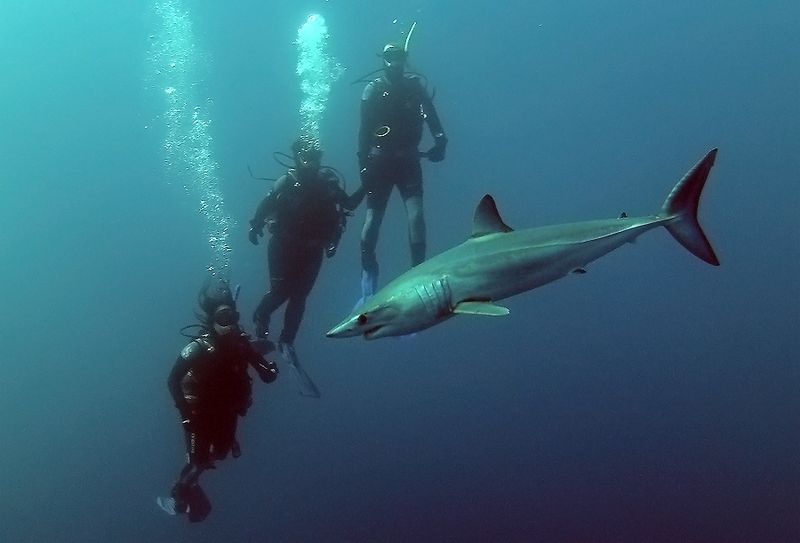
Renowned as the fastest shark, the Shortfin Mako can reach speeds up to 45 mph. This speed, coupled with agility, makes it a formidable hunter. Found in temperate and tropical seas, they occasionally come into contact with divers.
While attacks on humans are rare, their sheer power and speed demand respect. Divers often marvel at their streamlined bodies and razor-sharp teeth. As with all wild animals, observing from a distance allows appreciation without intrusion. The shortfin’s presence in the ocean underscores the diversity and complexity of marine life.
Blacktip Shark
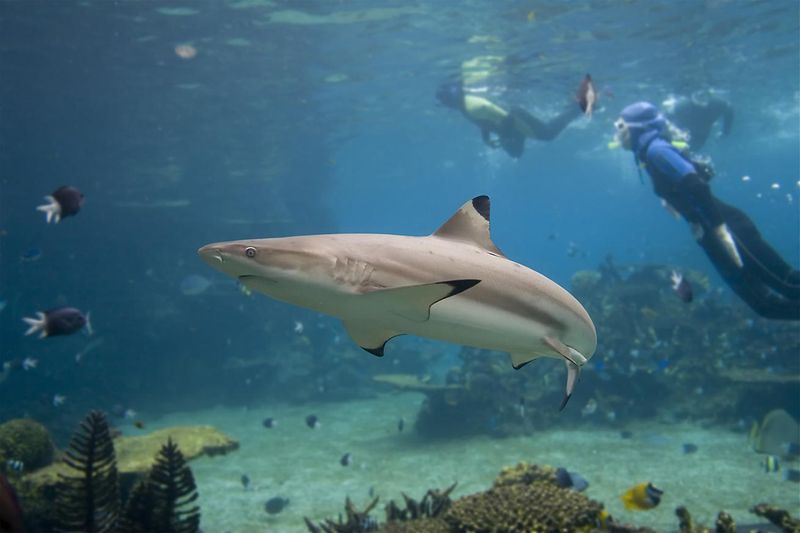
The Blacktip Shark, with its distinctive black-tipped fins, is a common sight in coastal waters. These agile swimmers are known for their acrobatic displays, often leaping out of the water. While generally shy around humans, they can become aggressive if provoked or threatened.
Typically found in warm, shallow waters, they pose little danger to divers who respect their space. Their presence in coral reefs contributes significantly to the ecosystem’s health. Observing their interactions offers insight into the delicate balance of marine environments.
Blue Shark
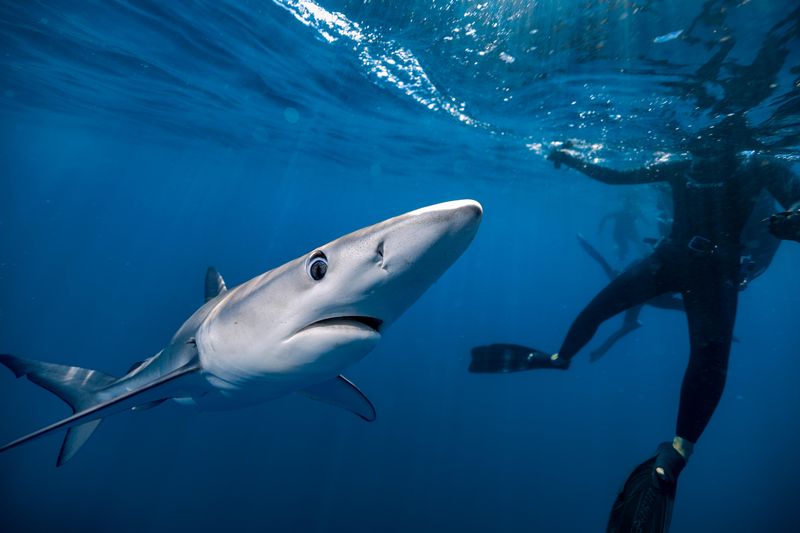
Sleek and elegant, the Blue Shark is a master of the open ocean. Known for its long migrations, it often travels thousands of miles across the seas. While generally non-threatening to humans, their curiosity can lead them to approach divers, especially during feeding frenzies.
They’re easily recognizable by their slender bodies and vibrant blue hues. Although they rarely pose a threat, caution is always advised when diving in their habitats. The Blue Shark’s graceful presence serves as a reminder of the vastness and mystery of oceanic life.
Bahamas, Tiger Beach
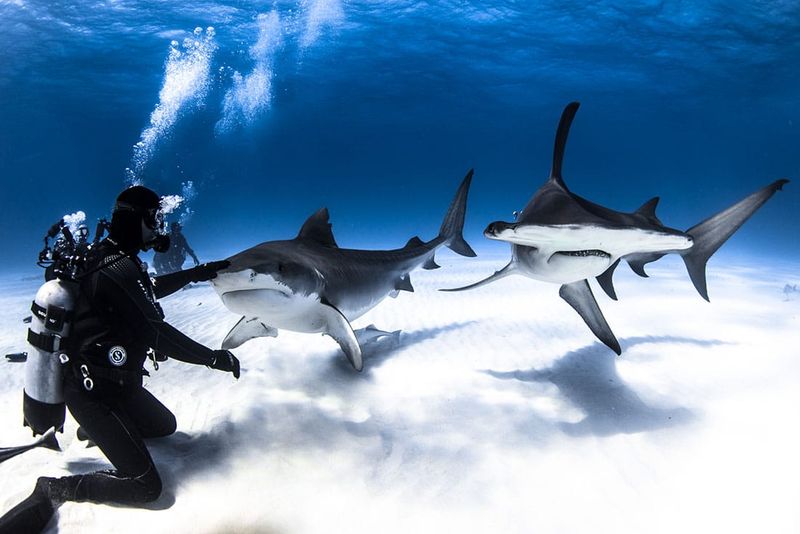
Tiger Beach in the Bahamas is renowned for its clear waters and thriving shark population. Divers flock to this location to encounter the magnificent Tiger Sharks, known for their distinctive markings and inquisitive nature. The safety measures in place ensure a controlled environment, allowing for thrilling yet secure interactions.
The warm, tropical waters offer excellent visibility, making it a paradise for underwater photographers. Observing these predators in their natural habitat provides insight into their behavior, enhancing awareness and appreciation of these often-misunderstood creatures.
South Africa, Gansbaai
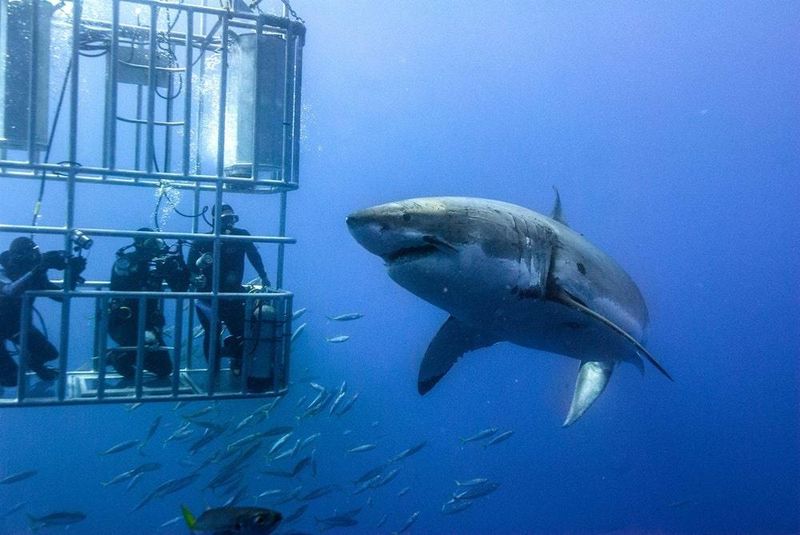
Gansbaai, dubbed the ‘Great White Capital of the World’, is a premier destination for shark cage diving. Here, thrill-seekers can safely observe the formidable Great White Sharks up close. The cold Atlantic waters, teeming with seals, attract these apex predators, providing an exhilarating experience.
Operators adhere to strict safety protocols, ensuring both diver safety and shark welfare. The close proximity to Cape Town makes it an accessible adventure for those eager to explore marine life. Seeing Great Whites in their natural environment fosters a deeper understanding and respect for these powerful creatures.
Australia, Ningaloo Reef
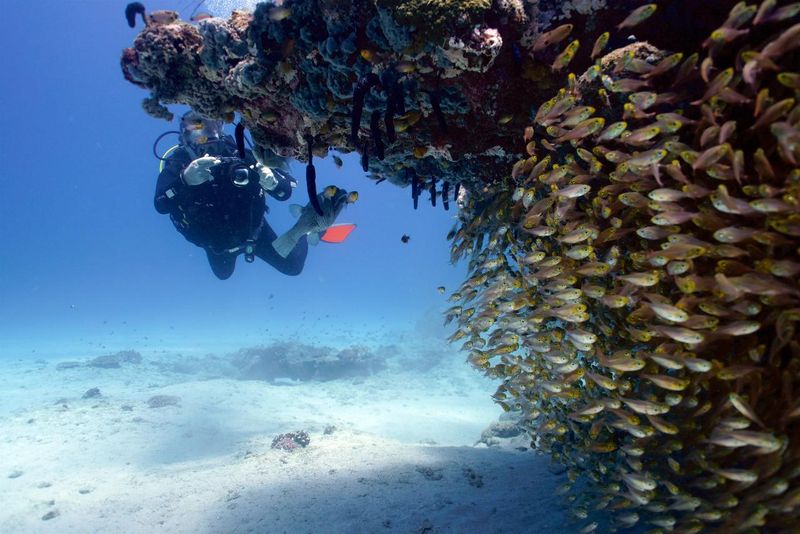
Ningaloo Reef, a UNESCO World Heritage site, offers a unique diving experience with its vibrant coral and abundant marine life. Here, divers can encounter Reef Sharks, known for their relatively docile nature. The pristine waters and diverse ecosystem make it a haven for those seeking peaceful interactions.
The reef’s remote location provides a tranquil escape from crowded tourist spots. Observing Reef Sharks amidst the stunning backdrop of coral gardens highlights the importance of conservation efforts. This underwater paradise invites adventurers to explore its depths safely and sustainably.
Hawaii, Oahu’s North Shore
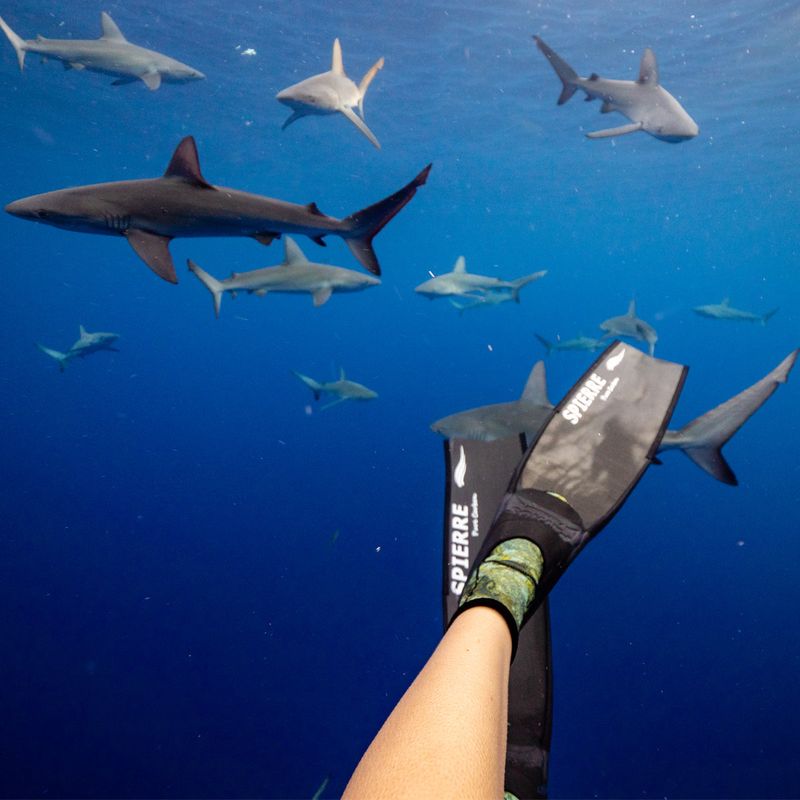
Oahu’s North Shore in Hawaii is famed for its beautiful beaches and diverse marine life. Here, divers can observe Galapagos Sharks in their natural habitat. These sharks, known for their calm demeanor, are often seen cruising the warm waters, offering a safe encounter for divers.
The crystal-clear waters provide excellent visibility, enhancing the overall diving experience. Operators focus on educating visitors about shark behavior, promoting a harmonious relationship between humans and marine life. Diving in these idyllic surroundings is both enlightening and exhilarating.
Maldives, Ari Atoll
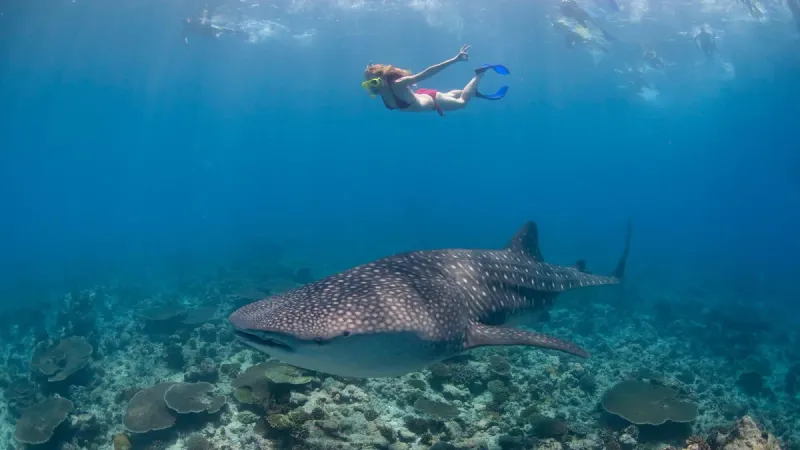
Ari Atoll in the Maldives is a top destination for divers eager to see Whale Sharks. These gentle giants, despite their enormous size, pose no threat to humans. Known for their slow movements and filter-feeding habits, they provide a unique spectacle for underwater enthusiasts.
The atoll’s warm waters and rich biodiversity make it perfect for both novice and experienced divers. Encountering a Whale Shark is an awe-inspiring experience that leaves a lasting impression. This tranquil paradise emphasizes the beauty and fragility of ocean life, encouraging conservation efforts.
Mexico, Isla Mujeres
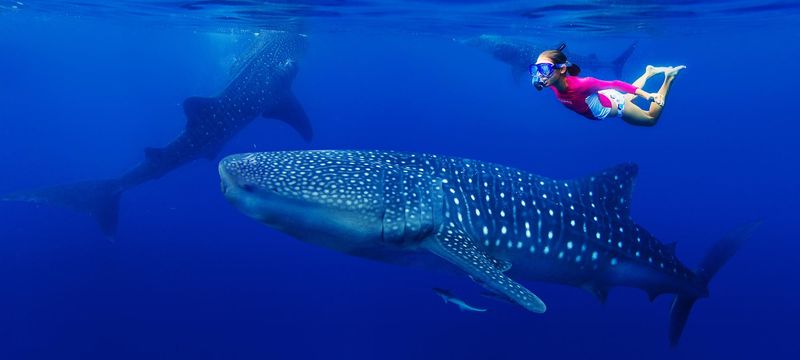
Isla Mujeres, located off Mexico’s Yucatan Peninsula, is renowned for its Whale Shark gatherings. During certain months, these gentle giants flock to the area, offering unparalleled opportunities for swimming alongside them. Their peaceful nature makes encounters safe and awe-inspiring.
The island’s vibrant culture and scenic beauty complement the underwater adventures. Snorkeling with Whale Sharks here is an unforgettable experience that highlights the need for marine preservation. This harmonious blend of adventure and relaxation attracts visitors seeking natural wonders and cultural enrichment.
California, Channel Islands

The Channel Islands off California’s coast offer a unique diving experience with Leopard Sharks. These sharks, known for their striking patterns and gentle nature, inhabit the kelp forests, providing a surreal underwater landscape. The cool Pacific waters and diverse marine life make it an ideal spot for exploration.
Divers often describe encounters with Leopard Sharks as tranquil and mesmerizing. The islands’ protected status ensures a thriving ecosystem, promoting sustainable diving practices. Exploring this underwater haven nurtures a profound connection to the natural world.
Fiji, Beqa Lagoon
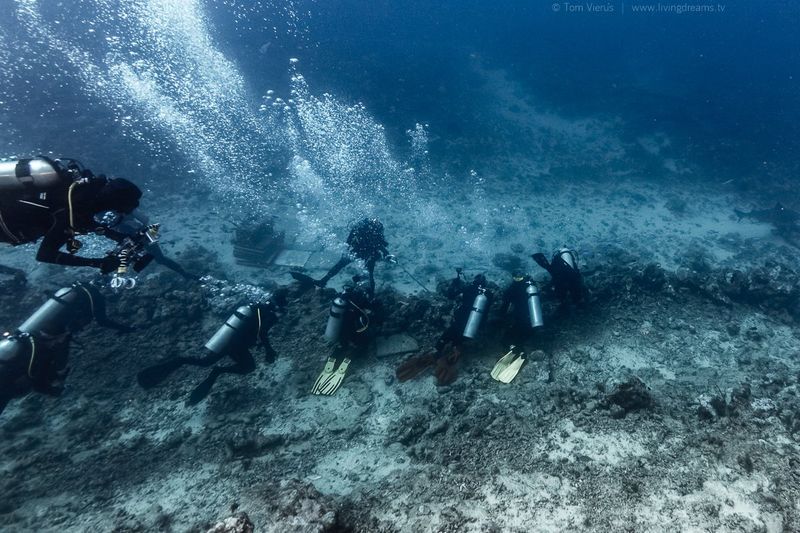
Beqa Lagoon in Fiji is a renowned location for Shark Diving, particularly with Bull Sharks. Known for their imposing presence, these sharks are often seen gliding through the lagoon’s crystal-clear waters. The site offers a thrilling yet controlled environment for observing these fascinating predators.
The experience is enhanced by the lagoon’s vibrant coral and abundant fish life. This adventure emphasizes the importance of shark conservation, educating divers on the delicate balance of marine ecosystems. The lagoon’s beauty and biodiversity provide a captivating backdrop for this unforgettable dive.

